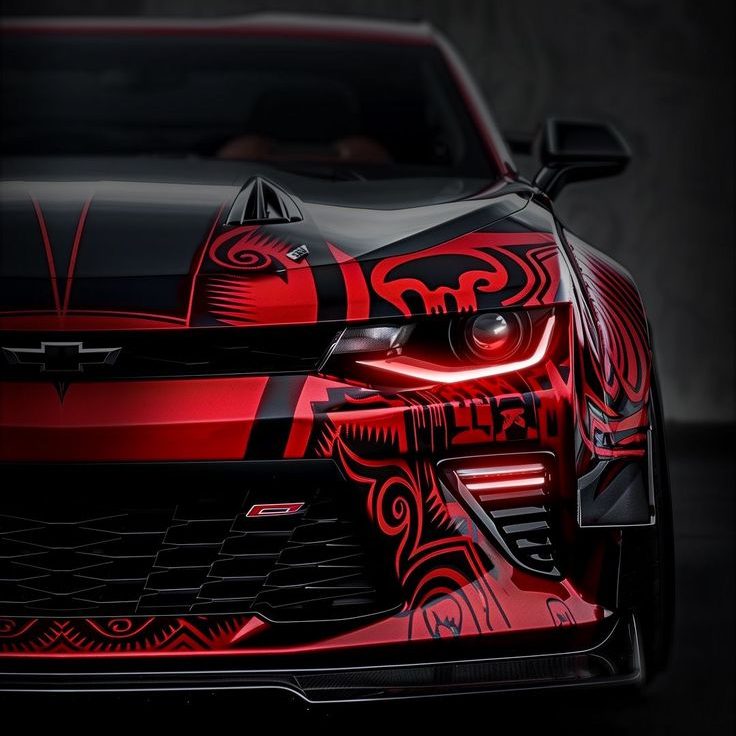Introduction to Car Color Psychology
The Impact of Color on Perception
Color significantly influences our perception in various aspects of life, shaping our feelings, emotions, and preferences. When it comes to cars, color choice is often one of the first decisions a buyer makes, and many ask, is red a good car color? Red undoubtedly stands out as a bold and vibrant option, often associated with energy, passion, and speed. The psychology behind color choices goes beyond mere aesthetics, influencing how cars are perceived by both drivers and bystanders, making red a striking choice for those who want their vehicle to make a statement.
Cultural Significance of Red
Red is a color steeped in cultural significance, often associated with passion, energy, and enthusiasm. In many cultures, red symbolizes danger or warning. This connection can impact how a red car is viewed on the road. Other drivers might perceive a red car as more aggressive or fast, contributing to the belief that red cars are driven by more confident or daring individuals. Understanding this psychological influence can provide insight into the complexities of color choice and the overall impressions that arise from it.
The Role of Color in Marketing
Automotive manufacturers often integrate color psychology into their marketing strategies. Red cars are frequently showcased in advertisements due to their eye-catching nature. The use of red can evoke excitement and stimulate emotions, persuading consumers to consider purchasing a particular vehicle. This strategy highlights the importance of color in influencing preferences and decisions, reinforcing the idea that the color of a car can affect perceptions and desirability.

Color Perception and Safety
1. Visibility and Attention
Color also plays a vital role in the visibility of vehicles on the road. Red car attract attention due to their vibrant hue, potentially making them more noticeable compared to other colors like gray or black. Increased visibility can lead to a reduced risk of accidents, as other drivers are more likely to spot a red vehicle quickly.
Studies on Color Safety
Various studies support this connection between car color and safety. Research has shown that lighter and more vibrant colors, such as red, yellow, and white, are associated with fewer accidents than darker colors. This information can be valuable for drivers when considering color choices, as selecting a color that enhances visibility may contribute to overall safety on the road.
2. Driver Behavior and Aggression
Interestingly, research also indicates a correlation between car color and driver behavior. Some studies suggest that individuals who drive red cars might exhibit more aggressive driving patterns. This perception can create a self-fulfilling prophecy; other drivers may respond to a red car with heightened caution or impatience, leading to tense interactions on the road.
Implications for Road Safety
The potential link between color and aggressive driving behaviors underscores the importance of being mindful of how one’s choice of vehicle color can influence not only personal actions but also the actions of other drivers. Acknowledging these dynamics can encourage safer driving practices across the board.

3. Insurance Considerations
While color can influence perception and behavior, it also plays a role in car insurance costs. Many individuals wonder whether the color of their vehicle affects their insurance premiums. Insurers typically consider various factors when calculating rates, including the make, model, year, and color of the vehicle.
Evaluating Insurance Premiums
Traditionally, it was thought that red cars were more expensive to insure due to the association with speed and aggressiveness. However, modern insurance practices take a more analytical approach. Insurers analyze accident statistics based on color but focus more on safety ratings, theft rates, and the cost of repairs for specific makes and models.
The Reality of Color and Insurance Costs
1. Color Myths Debunked
The myths surrounding the cost of insuring red cars have been largely debunked. While popular belief suggested that red cars attract higher insurance premiums, studies have shown that this is not necessarily the case. Factors such as driving habits, location, and the individual’s claims history tend to weigh more heavily in determining insurance costs.
Comprehensive Assessments
Insurers conduct comprehensive assessments that take into account the likelihood of theft and specific risks associated with each vehicle. Ultimately, factors like safety features, performance, and driver behavior significantly affect insurance rates rather than color alone. Individuals should prioritize other variables that may directly influence their premiums.

2. Practical Implications for Buyers
For potential car buyers, the decision of whether to opt for a red car or another color should take into account personal preferences and lifestyle choices. While color can have psychological and perception-based impacts, the practical implications related to insurance costs may not be as significant as previously thought.
Balancing Aesthetics and Practicality
As buyers explore their options, they should balance aesthetics with practical considerations, such as maintenance costs and resale value. Choosing the right color can be an enjoyable aspect of car shopping, but it is essential to approach the decision thoughtfully, making sure it aligns with your overall goals for the vehicle.
The Influence of Color on Resale Value
1. Market Demand for Colors
The resale value of a car can be influenced by its color, with certain shades maintaining higher demand in the market. Popular car colors such as white, black, and gray typically hold their value well due to widespread appeal. Conversely, bright colors like red may not appeal to everyone, potentially limiting the resale audience.
Assessing Future Trends
While red cars can attract attention and sell quickly among specific buyers, it is essential to consider market trends when choosing a vehicle color. As preferences shift over time, the resale value remains an important consideration, especially for those who plan to sell their cars after a few years. Staying informed about color trends in the automotive market can help buyers make choices that align with long-term value retention.
2. Personal vs. Market Preferences
At the end of the day, personal preference should weigh heavily in the decision-making process. If you love the color red and feel that it reflects your personality, it may be worth it despite potential risks to resale value. The joy of driving a car that resonates with your aesthetic vision can far outweigh potential financial concerns. Choose a color that makes you happy, especially since you will be the one driving and enjoying the vehicle day in and day out.
Finding a Balance
Some buyers find success by selecting classic colors that appeal to the average consumer. They incorporate fun, vibrant elements through accessories or features. For example, a sleek black or silver car can have red interior accents or trims. This adds a personal touch without compromising the vehicle’s overall marketability.

The Psychological Impact of Car Color
1. How Color Affects Behavior on the Road
The color of a car can influence not only how it is perceived but also how drivers behave on the road. Research has shown that color affects mood and emotions, which in turn can impact driving behavior. For instance, drivers in red cars might feel more energized and assertive, leading to assertive and sometimes aggressive driving patterns. This can create a psychological association between the color and the driver’s attitude, often leading to faster acceleration and less patience on the road.
The Connection between Color and Safety
Conversely, colors like white or silver might promote a calmer driving experience. Drivers in lighter-colored vehicles often report feeling more relaxed and patient, leading to smoother driving behaviors. Understanding these psychological connections can help drivers choose a color that aligns with their personality and promotes safer driving habits. It’s essential to recognize how color influences not just perception but also behavior behind the wheel.
2. Influence on Other Drivers’ Reactions
The color of your vehicle can also affect how other drivers react to you on the road. A red car may command more attention from other drivers, both positively and negatively. Some drivers might view a red vehicle as a confident presence and give it more room, while others might see it as a signal for aggression and react accordingly. This dynamic can contribute to the overall driving experience and how interactions unfold during commutes and longer travel.
Communication through Color
The color of a car serves as a form of non-verbal communication on the road. It can signal intentions and personality traits. Understanding this can help drivers navigate the roads more effectively and encourage better interactions with others. For example, a driver in a sophisticated navy blue car may be perceived as dependable and calm, while a driver in a bright red car may convey excitement and energy. Being mindful of these perceptions can enhance overall driving experiences.
3. Environmental and Cultural Influences
Car colors are also affected by environmental and cultural influences, which can shape perceptions and trends. In warmer climates, for example, lighter colors are often more popular as they reflect sunlight and help keep the vehicle cooler. Darker colors, such as red, may absorb heat and lead to uncomfortable temperatures inside the car. Cultural preferences can also play a significant role in color choices; certain colors may hold specific meanings or convey particular messages in various cultures.
Adapting to Local Trends
Understanding local trends and cultural significance can guide individuals in making color choices that will resonate within their environment. Choosing a color that aligns with local preferences can create a sense of belonging and acceptance. Whether you’re driving through cities steeped in tradition or modern hubs of creativity, selecting a color that speaks to the community enhances your connection to it.

Conclusion: Informed Decisions About Car Color
1. The Intersection of Color and Identity
Choosing a car color, such as red, involves more than just personal preference; it intertwines with identity, emotions, and perceptions. Understanding the psychological and social implications of color can help car buyers make informed decisions that reflect their personalities. The color of a car tells a story about the owner and serves as an expression of self.
As you step into the process of selecting a new vehicle, keep these insights about color in mind. Assess how a specific hue aligns with not only your personal style but the kind of message you want to convey on the road. This understanding transforms the buying experience from a mere transaction into a meaningful choice.
3. Enjoying Your Vehicle with Confidence
Ultimately, the joy of driving a car you love—regardless of its color—should be at the forefront of the decision-making process. With awareness of how car color influences perception, behavior, and insurance costs, you are now equipped to make a thoughtful choice that fits your lifestyle. Embrace the opportunity to express yourself through color on the road while enjoying the many adventures that await. Whether you choose a vibrant red or a classic shade, let your choice empower you to enjoy every journey with confidence!
